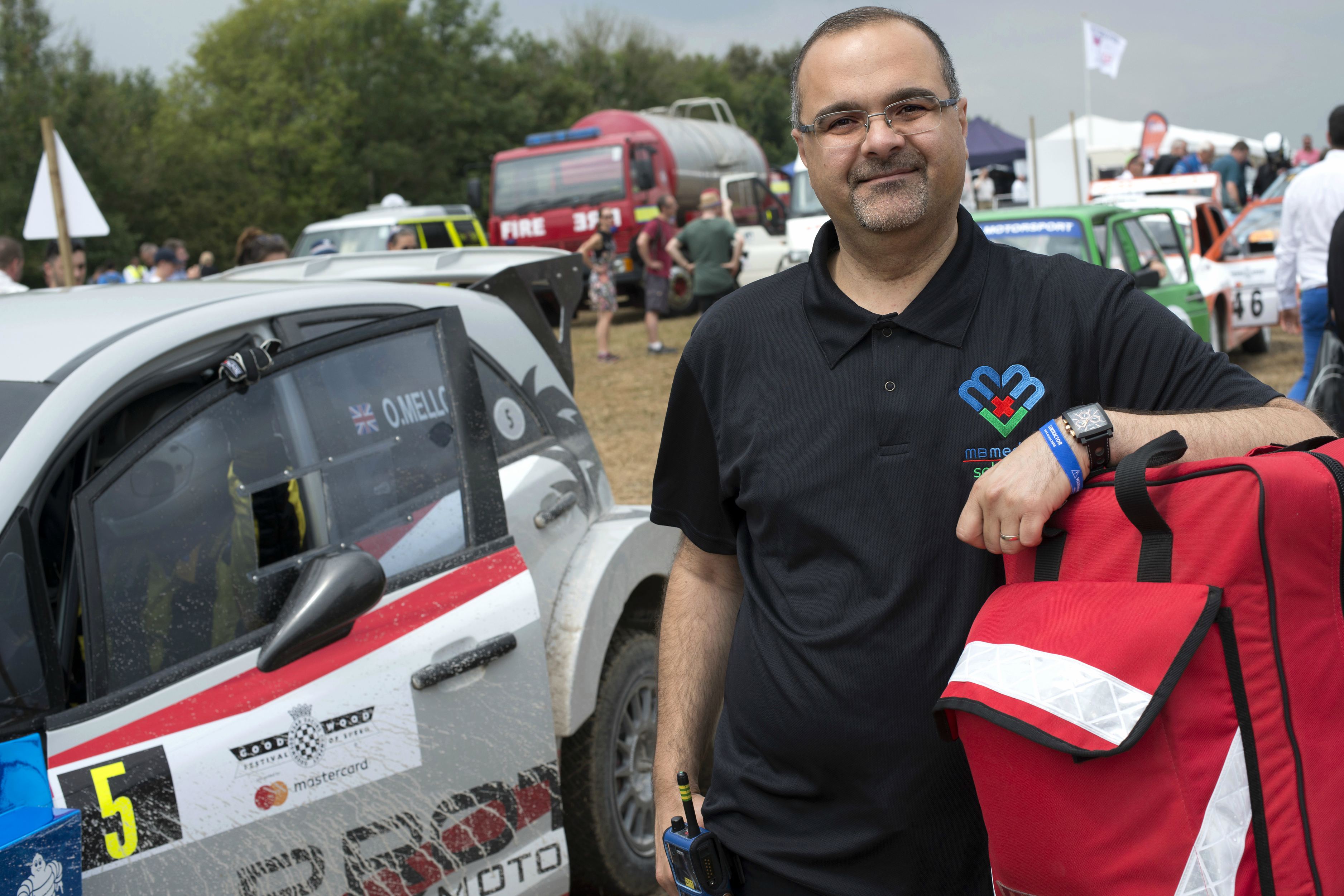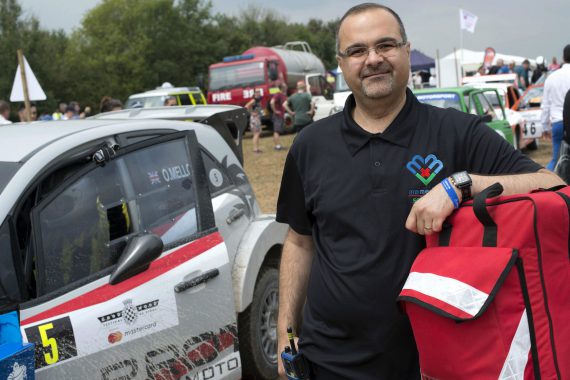Profile: Dr Zaid Almashta

Roles: GP partner in Chichester, West Sussex; crowd doctor at sporting and cultural events
Hours: Eight sessions a week in practice; 12-14-hour shifts per day as crowd doctor over four-day Goodwood Festival of Speed, and various events throughout the year
07.00
I arrive at Goodwood and go straight to the main treatment centre for the medical team briefing. This involves some 45 staff who make up six teams of crowd medics and one trackside team for the drivers. My crowd medic team – me, a nurse practitioner and four paramedics – is allocated a medical centre on the course.
I have been working as a crowd medic for the past eight years; I am interested in pre-hospital and urgent care – before becoming a GP I was an A&E physician – and crowd doctoring helps maintain my acute care skills. I also have a passion for cars and motor racing so the Festival of Speed is a great way to mix work and pleasure.
07.30
Spectators begin to filter onto the course. We take turns to go for breakfast; it’s important to eat before starting, as shifts can be long and tiring.
08.30
Our first patient arrives – a young food stall worker has burned his arm on a hot-water urn. I dress the wound and fill in a patient report form (PRF), documenting the injury, treatment and advice given. I also fill in a health and safety form, which includes advice for adjustments to prevent a repeat of the accident.
10.00
We attend an 80-year-old man. The ambulance can’t reach him, so I drive the team car – a golf buggy – to his location under radio direction from Goodwood control, who track me on CCTV. I perform an ECG, which reveals complete heart block. We stabilise and transfer him to hospital. We learn later he has had a pacemaker fitted and is doing well.
11.00
We are seeing a steady stream of people suffering in the heat – it’s over 33°C. A 92-year-old man is brought in feeling very light-headed. He has been limiting his water intake because he takes diuretics – among a handful of cardiovascular drugs – and wanted to avoid going to the toilet too often. We keep him under observation, giving him water and food, and he recovers sufficiently to be discharged.
I also give him a letter for his GP, advising an appointment to optimise his medications as his blood pressure was low. This is where GP skills are invaluable, giving me the confidence to manage risk and give follow-up advice.
12.30
I explore the trade stands in my lunch break, picking up some engine tools and memorabilia. I also catch the end of an exciting auction, where a classic 1961 Aston Martin is sold for £10m.
14.00
A spectator with mild asthma is experiencing symptoms and has forgotten her reliever inhaler. I give her a private prescription for the onsite pharmacy. She queries the £10 fee as she qualifies for free prescriptions but, while the care we provide is free, we can’t issue NHS prescriptions.
Patients are more often surprised they don’t have to pay for care, especially as we often see lots of people at the events who are from overseas. Sometimes we can suggest an official supporting charity they can donate to, but people also bring us ice-creams to say thanks.
15.00
I catch some racing during a break, including the rally car time trials. My main interest is Formula 1 but I find all the track events are thrilling close up.
17.00
A woman with epilepsy comes in, concerned she is experiencing near-seizures. I suspect the heat, crowds and engine noise have affected her. We keep her under observation until she is stabilised and able to leave with friends. It is common for spectators to find an event has an unexpected effect on a long-term condition, which they hadn’t prepared for.
19.30
We stand down, handing in radios and a ‘shopping list’ to replenish medical supplies for the next day. We have had 20 PRFs and 40 patient interactions – minor presentations with simple advice or treatments like painkillers. An intense shift, but typical because of the heatwave.
Pulse October survey
Take our July 2025 survey to potentially win £1.000 worth of tokens













